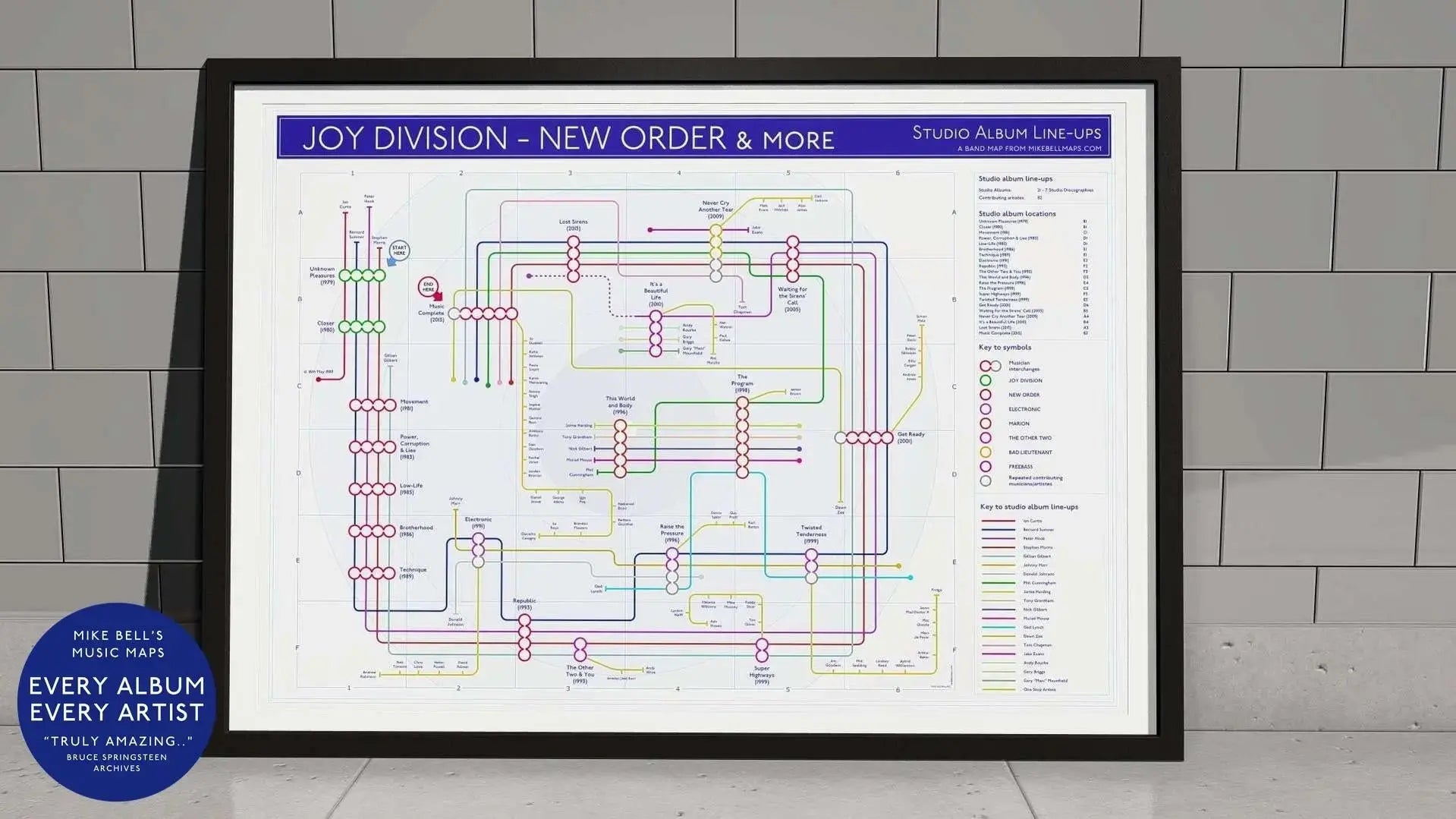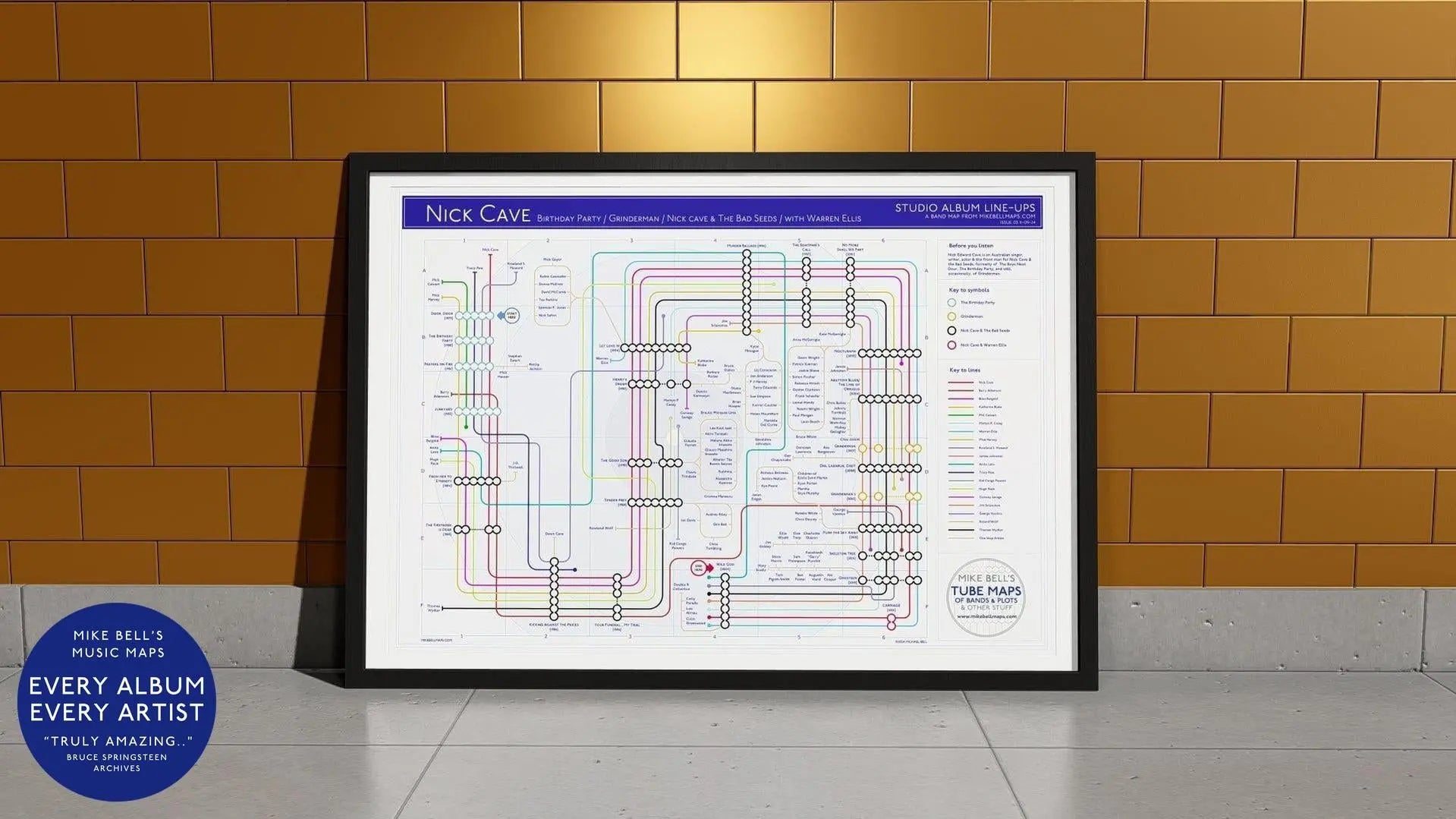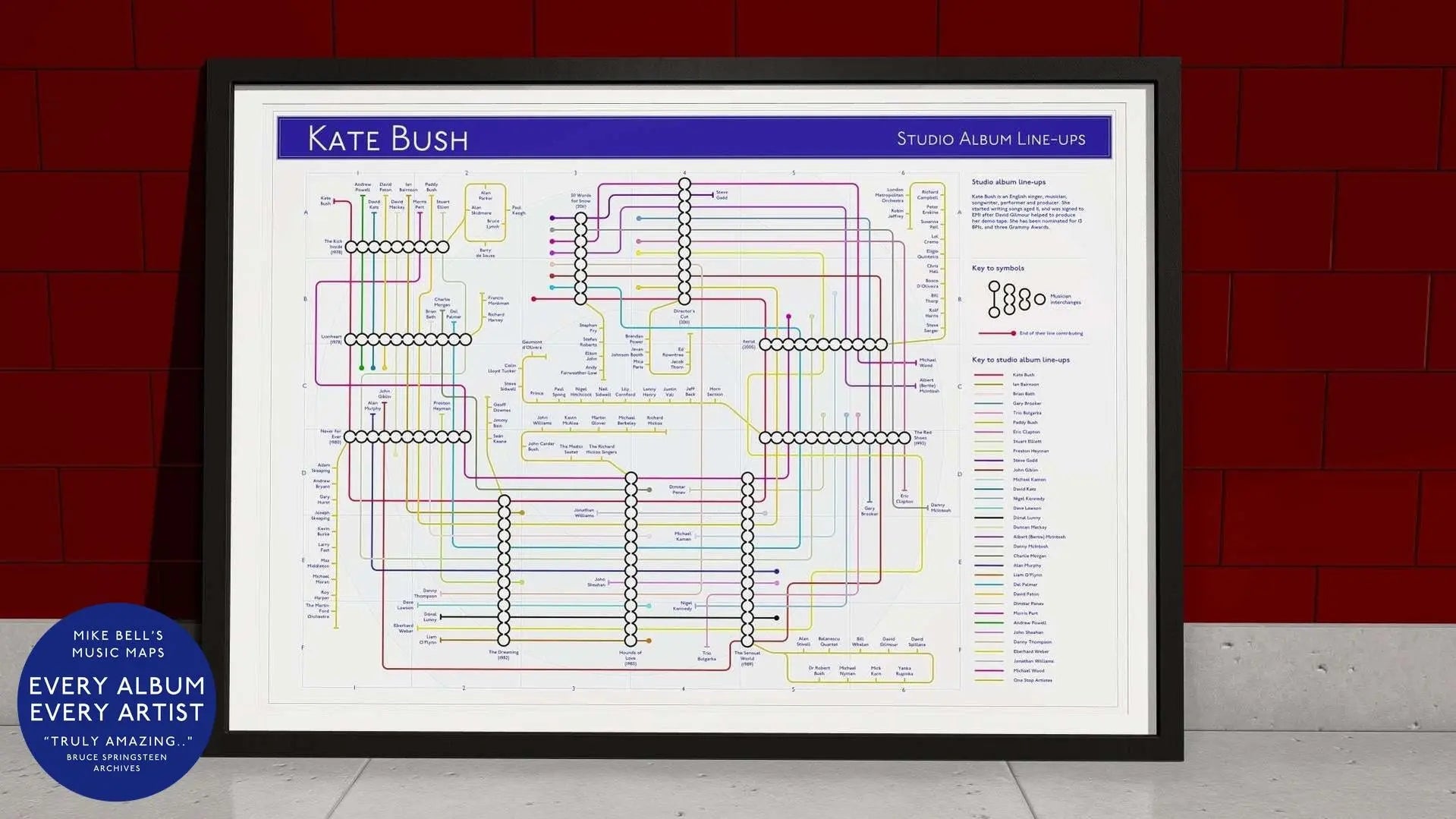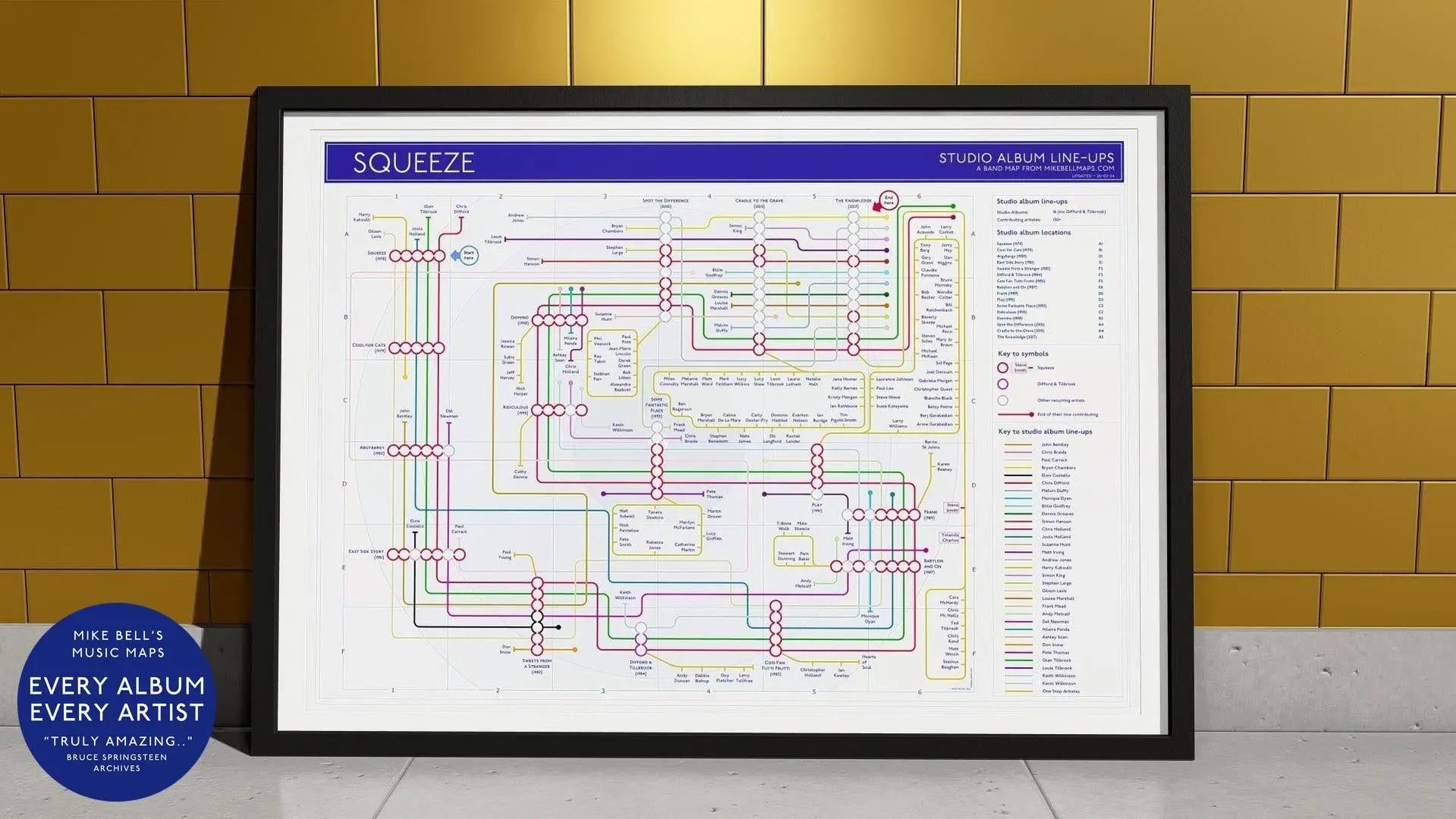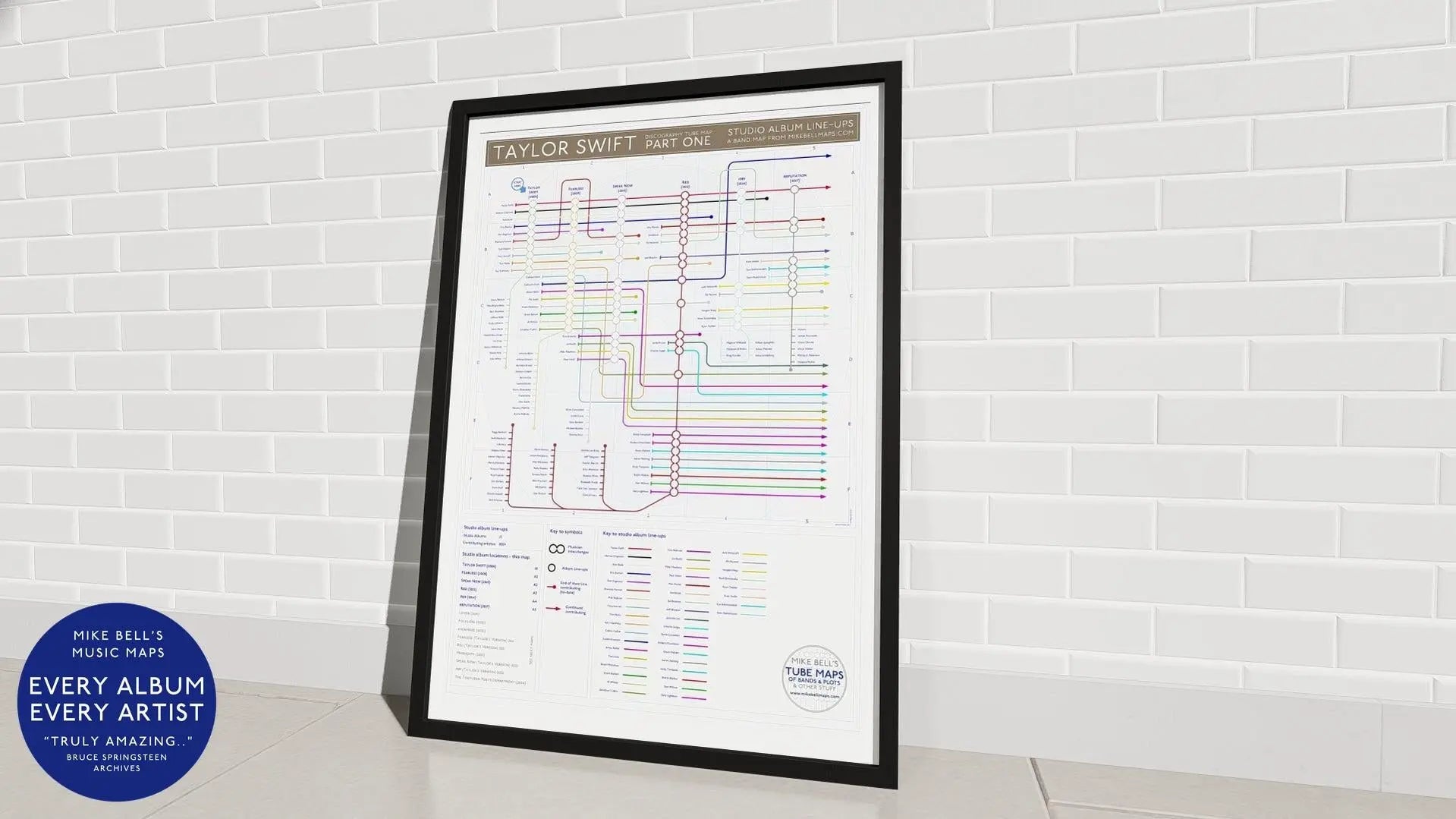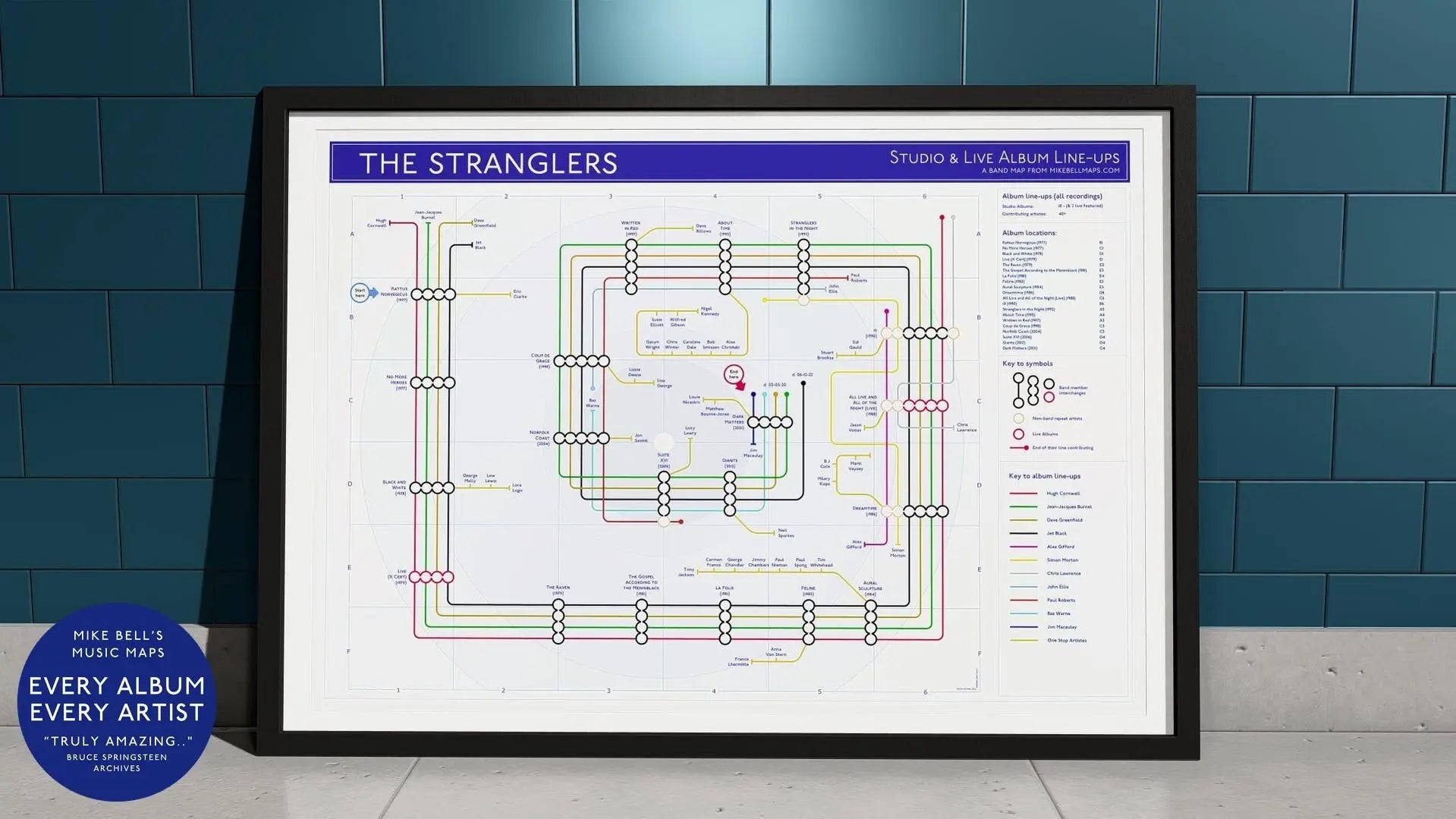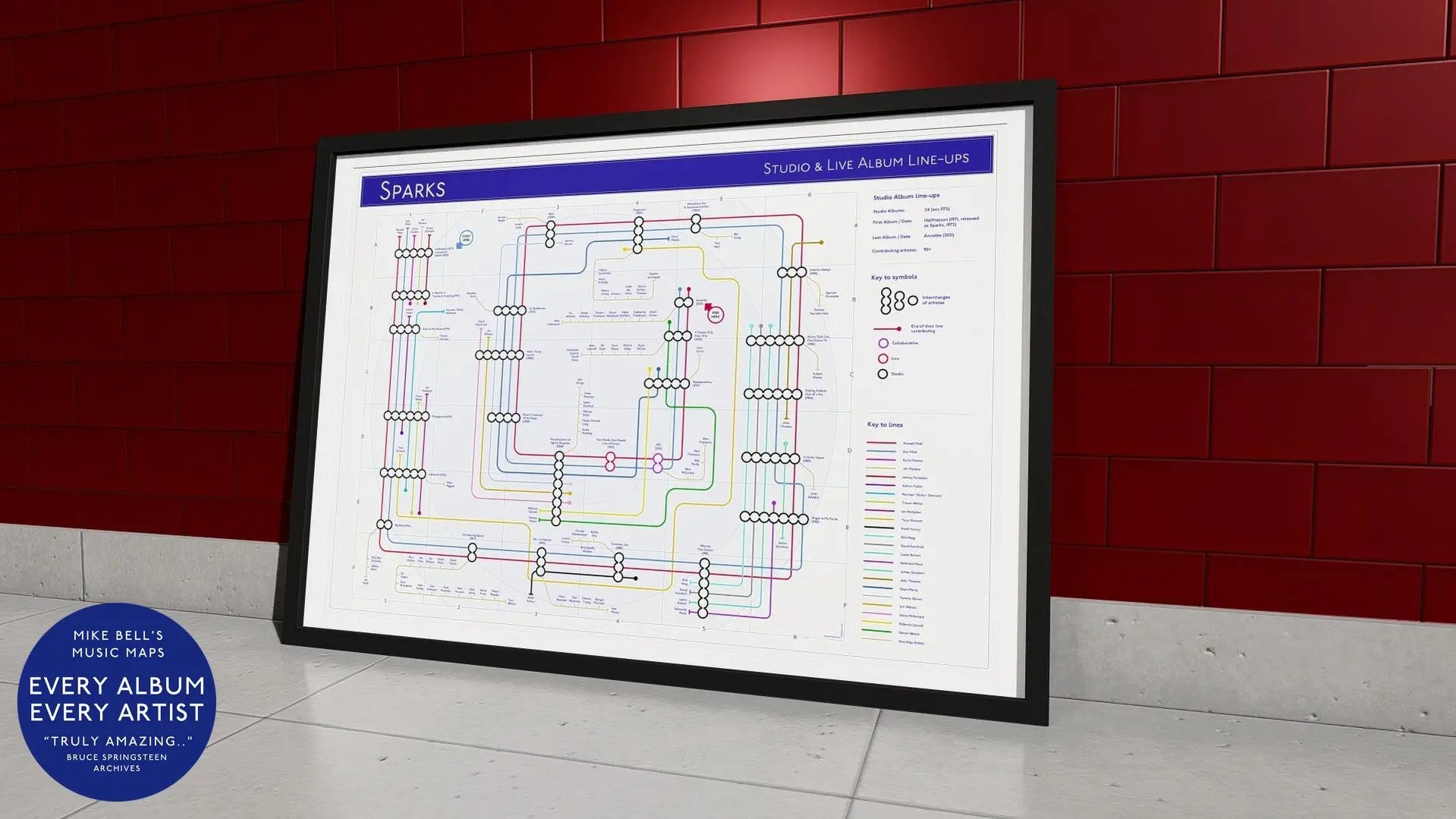
The Cure vs Echo and the Bunnymen - A Comparison
by Mike Bell
·
The Cure vs Echo and the Bunnymen is a considered review of two very influential groups over a large chunk of the history of modern music. Echo & the Bunnymen have released 13 studio albums, while The Cure has released 14, both starting in the late 1970s. Both bands experienced significant lineup changes, with Echo & the Bunnymen losing drummer Pete de Freitas in 1989 and The Cure seeing Robert Smith as the only constant member. The Cure has sold over 30 million albums worldwide, far outpacing Echo & the Bunnymen’s over 658,250 albums, mostly in the UK. Sales performance shows The Cure has a broader global reach, while Echo & the Bunnymen are more UK-focused. Both bands used session artists, with The Cure integrating some into permanent roles, an unexpected detail given their stable core sound.
Echo & the Bunnymen’s Albums
Echo & the Bunnymen’s 13 studio albums, from Crocodiles (1980) to The Stars, the Oceans & the Moon (2018), include hits like “The Killing Moon” from Ocean Rain (1984).

The Cure’s Albums
The Cure’s 14 albums, starting with Three Imaginary Boys (1979) and ending with Songs of a Lost World (2022), feature Disintegration (1989) and Wish (1992). The Cure’s discography shows a wider range, from post-punk to gothic rock, while Echo & the Bunnymen maintain a consistent post-punk style.
The Cure vs Echo and the Bunnymen: Lineup Changes and Session Artists
Echo & the Bunnymen’s core included Ian McCulloch, Will Sergeant, Les Pattinson, and Pete de Freitas (drums from 1980), with major changes after de Freitas’s 1989 death and McCulloch’s 1988 exit, later reuniting. The Cure, with Robert Smith as the only constant, saw bassist Simon Gallup leave and return and founding member Lol Tolhurst exit in 1989. Both used session artists, with The Cure integrating some like Porl Thompson into permanent roles, an unexpected detail given their core sound stability.
Sales Performance
The Cure has over 30 million album sales, with Wish selling over 1.2 million, in contrast with Echo & the Bunnymen’s over 658,250, which is mostly UK-based, with Ocean Rain at over 106,450. The Cure’s global reach includes strong sales in the US, Europe, Australia, and Japan, while Echo & the Bunnymen are more UK-centric.
Survey Note: The Cure vs Echo and the Bunnymen
In the realm of alternative music, Echo & the Bunnymen and The Cure stand as pivotal bands from the late 1970s post-punk scene. Each has distinct trajectories in their studio albums, lineup changes, use of session artists, and sales performance across various markets. This analysis provides a comprehensive examination, drawing on detailed discographic and commercial data to highlight their similarities and differences.
Studio Albums: A Tale of Two Discographies
Echo & the Bunnymen have released 13 studio albums, beginning with their debut, Crocodiles, in 1980, which garnered critical acclaim and reached the UK Top 20. Their discography includes notable works such as Heaven Up Here (1981), which peaked at number 10 in the UK, Porcupine (1983), with the hit “The Cutter” reaching number 2, and the landmark Ocean Rain (1984), featuring “The Killing Moon” and achieving a UK chart position of 4. Later albums like Evergreen (1997) and The Stars, the Oceans & the Moon (2018), a mix of re-recorded classics and two new tracks, reflect their enduring legacy. The band’s consistent post-punk sound and occasional psychedelic influences are evident throughout.
In contrast, The Cure has released 14 studio albums, starting with Three Imaginary Boys in 1979, which reached number 44 in the UK. Their evolution is marked by albums like Seventeen Seconds (1980, UK #20, US #186), Pornography (1982, UK #8, US #133), and the commercially successful Disintegration (1989, UK #3, US #12). Their 1992 album Wish topped the UK charts and reached number 2 in the US, selling over 1.2 million copies worldwide, while their latest, Songs of a Lost World (2022), reached number 1 in the UK and number 4 in the US, marking their first new album in 16 years. The Cure’s discography spans post-punk, gothic rock, and pop-infused dark wave, showcasing a broader musical range.
The Cure vs Echo and the Bunnymen: studio albums and peak chart positions:
|
Band |
Number of Studio Albums |
Debut Album (Year, UK Peak) |
Notable Album (Year, UK Peak, US Peak) |
Latest Album (Year, UK Peak, US Peak) |
|
Echo & the Bunnymen |
13 |
Crocodiles (1980, 17) |
Ocean Rain (1984, 4, -) |
The Stars, the Oceans & the Moon (2018, 11, -) |
|
The Cure |
14 |
Three Imaginary Boys (1979, 44) |
Wish (1992, 1, 2) |
Songs of a Lost World (2022, 1, 4) |
This comparison highlights The Cure’s greater chart success and broader musical evolution compared to Echo & the Bunnymen’s more focused post-punk approach.
Lineup Changes: Stability vs. Fluidity
Both bands have navigated significant lineup changes, reflecting the challenges of maintaining a creative unit over decades.
Echo & the Bunnymen’s original lineup in 1978 included vocalist Ian McCulloch, guitarist Will Sergeant, and bass player Les Pattinson, initially supplemented by a drum machine. Pete de Freitas joined as drummer in 1980. This lineup achieved critical and commercial success with albums like Crocodiles and Heaven Up Here. However, de Freitas’s death in a motorcycle accident in 1989 and McCulloch’s departure in 1988 for a solo career led to a new lineup with Noel Burke on vocals and Damon Reece on drums for Reverberation (1990), which received poor reception and led to the band’s disbandment in 1993. They reunited in 1997 with McCulloch, Sergeant, and Pattinson, though Pattinson later left again, with McCulloch and Sergeant continuing as the core.
The Cure, formed in 1976 as Malice and renamed Easy Cure before becoming The Cure in 1978, started with guitarist/vocalist Robert Smith, drummer Laurence “Lol” Tolhurst, and bassist Michael Dempsey. Smith is the only remaining original member, with the band undergoing numerous changes. Bassist Simon Gallup, a long-term member, left in the 1980s but returned, while Tolhurst exited in 1989 after transitioning to keyboards. Other key members include Porl Thompson (guitar), Roger O’Donnell (keyboards), Perry Bamonte (multi-instrumentalist), Reeves Gabrels (guitar), and Jason Cooper (drums), with the 2025 lineup including Smith, Gallup, O’Donnell, Bamonte, Gabrels, and Cooper. This fluidity has allowed The Cure to experiment with different sounds, from the minimalism of Seventeen Seconds to the expansive Disintegration.
The key difference lies in Echo & the Bunnymen’s more stable core, anchored by McCulloch, Sergeant, and Pattinson, versus The Cure’s more experimental approach, with Smith as the constant creative force.
Session Artists: Enhancing the Sound
Looking across The Cure vs Echo and the Bunnymen analysis, both bands have relied on session artists to augment their recordings, particularly during periods of lineup changes.
For Echo & the Bunnymen, after Pete de Freitas’s death, they worked with various drummers, including Damon Reece for Reverberation (1990) and later Ian Brodie, ensuring continuity in their rhythm section. They also collaborated with The Royal Burundi Drummers for a live performance of “Zimbo” in 1984. In 1990, they contributed a remix of “What Time Is Love?” by The KLF, credited as “Echo & The Bunnymen Mix.” In 1998, they were part of England United for “(How Does it Feel to Be) on Top of the World?” with artists like Spice Girls and Ocean Colour Scene.
The Cure has extensively used session musicians, with Porl Thompson and Roger O’Donnell contributing before becoming full-time members. Notable collaborations include Saffron on “Just Say Yes” (2002) from Greatest Hits, James McCartney on “Hello Goodbye” (2005) for Instant Karma: The Amnesty International Campaign to Save Darfur, and Robert Smith covering “C Moon” (2014) for The Art of McCartney. These collaborations have enriched their sound, particularly during transitions between albums.
An unexpected detail is The Cure’s integration of session artists into permanent roles, such as Thompson and O’Donnell, which contrasts with Echo & the Bunnymen’s more temporary use, reflecting The Cure’s adaptability.
Album Sales and Market Performance: Global Reach vs. UK Focus
Commercial success reveals a stark contrast between the two bands.
The Cure has sold over 30 million albums worldwide, with Wish (1992) being their best-seller at over 1.2 million copies, reaching number 1 in the UK and number 2 in the US. Their albums have charted strongly in multiple markets, including Europe (Disintegration reached number 3 in Germany), Australia (Kiss Me, Kiss Me, Kiss Me reached number 5), and Japan (Wish reached number 2). This global reach is supported by their consistent chart performance, with albums like Songs of a Lost World (2022) hitting number 1 in the UK and number 4 in the US.
Echo & the Bunnymen, in contrast, have total album sales of over 658,250, with the majority in the UK. Their best-selling album, Ocean Rain (1984), has sold over 106,450 copies. They achieved commercial peaks in the mid-1980s with Porcupine (UK #2) and Ocean Rain (UK #4). However, their sales are more niche outside the UK, with limited data on other markets, suggesting a more cult following globally than The Cure’s mainstream appeal.
A table summarizing sales and market performance is provided below:
|
Band |
Total Album Sales |
Best-Selling Album (Sales, Year) |
UK Market Strength |
Global Market Reach |
|
Echo & the Bunnymen |
Over 658,250 |
Ocean Rain (over 106,450, 1984) |
Strong, Top 10 peaks |
Limited, UK-focused |
|
The Cure |
Over 30 million |
Wish (over 1.2 million, 1992) |
Strong, multiple #1s |
Extensive, US, Europe, Australia, Japan |
This comparison underscores The Cure’s broader commercial success and global market penetration compared to Echo & the Bunnymen’s more UK-centric sales.
Conclusion: Legacy and Impact
Echo & the Bunnymen and The Cure represent two distinct yet parallel paths in alternative music. Both share roots in post-punk and have navigated complex lineup changes. Still, The Cure’s broader musical exploration and commercial success, with over 30 million albums sold globally, have set them apart. Echo & the Bunnymen, with their loyal fan base and critically acclaimed discography, remain celebrated for their unique contribution, particularly in the UK, with sales over 658,250. Together, these bands have left an enduring legacy that continues to inspire music lovers worldwide as of March 20, 2025.
















